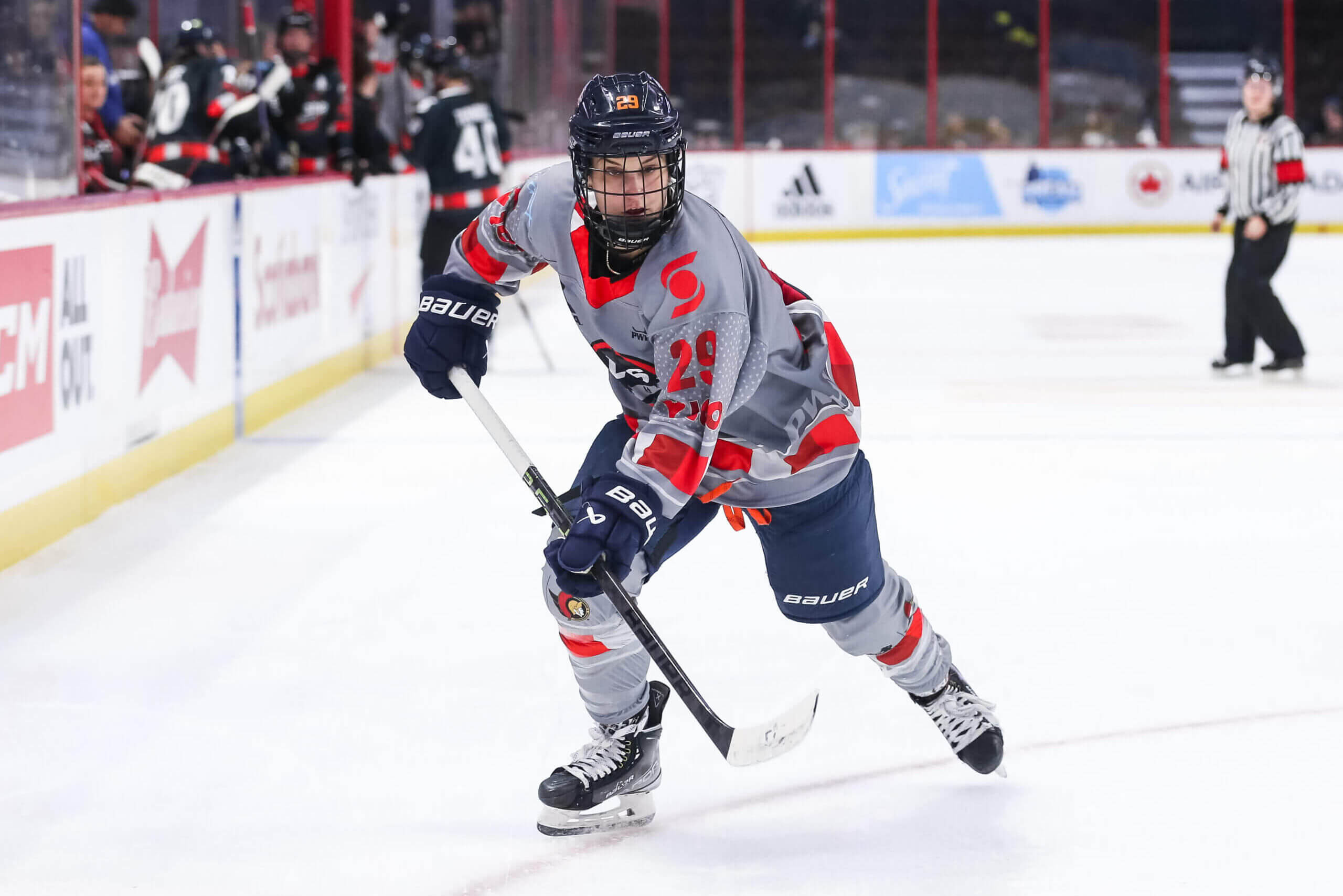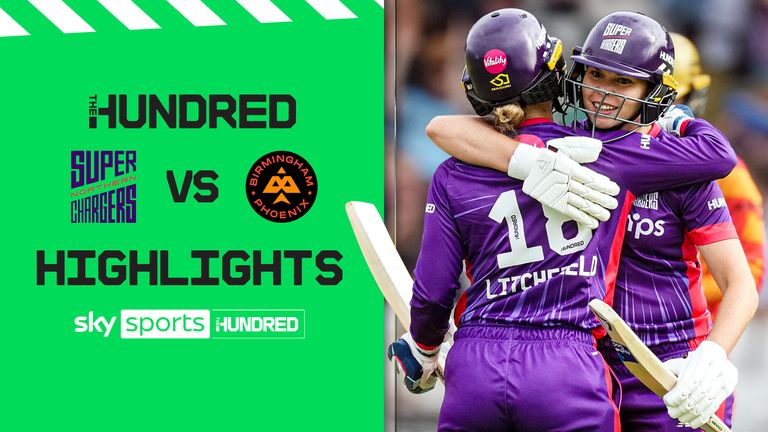It’s been quiet since the June 30 announcement that a new women’s professional hockey league would launch in January 2024. But quiet doesn’t mean stagnant.
A lot of work is being done behind the scenes between finalizing team locations, locking up venues, creating logos, hiring hockey operations staff and more.
More details on the league are expected to come during a big press conference sometime this month, Stan Kasten, one of the leaders of the new league, said in an interview with The Athletic in July.
Until then, here’s what The Athletic has been hearing over the last several weeks about where teams might be located and how rosters will be built.
Where will the teams be located?
It’s what everybody wants to know. However, selecting the original cities is a complicated process that is taking some time to complete.
The biggest hurdle: Venues.
Some otherwise ideal women’s hockey markets might not have facilities that check the necessary boxes. An ideal women’s hockey venue would be easy to travel to within its metro area. An arena shouldn’t be too big, but you also don’t want to put a ceiling on how much money you can draw from ticket revenues. You need adequate locker rooms for players. Training facilities. Prime ice time windows — gone are the days of 10 p.m. practices. Venues — whether training or game facilities — need to be “appropriate for professional/international hockey,” according to the collective bargaining agreement, which has been obtained by The Athletic.
The process of identifying cities, league venues and training facilities is well underway. Last month, Kasten told The Athletic that league leadership was “working on finalizing our list of cities.”
Toronto and Montreal are two Canadian locks. Many of the most important players in the sport in Canada already live and train there — they are no-brainers.
Now that the Premier Hockey Federation has ceased operations, it is my understanding that Boston and Minnesota are in the mix as American markets. As Kasten said in July, “A lot of cities just didn’t understand what we were doing putting a second team in a city that had a PHF team in it. Well, they now see things differently in some cities.”
Of the seven PHF franchise locations, few American markets make more sense than Boston and Minnesota.
Boston had teams in the now-defunct Canadian Women’s Hockey League and was a founding member of the National Women’s Hockey League in 2015. The Boston Pride were a successful franchise in the NWHL (turned PHF). Starting in Year 2, the Pride played games at the Bruins’ practice facility, Warrior Ice Arena, and had some of the top resources for players. The team won three championships and had its banners hung alongside those of the Bruins, Celtics, Patriots and Red Sox at Boston Logan Airport. Like Toronto and Montreal, Boston is a big women’s hockey hub. Many top players live, played or grew up in the area, making it a natural destination for the pro women’s game.
Perhaps no market makes more sense than Minnesota. The state of hockey has been a leader in the U.S. in providing girls and women opportunities to play hockey for years. And sports fans in Minnesota have a track record of filling arenas and supporting teams at the professional, collegiate and high school levels.
The University of Minnesota women’s hockey team has been one of the biggest annual draws in women’s college hockey in recent years, only behind the University of Wisconsin whose “Fill the Bowl” games have set records for attendance in women’s hockey. University of Minnesota Duluth typically rounds out the top three. The WNBA’s Minnesota Lynx usually rank top five in attendance and are averaging over 8,000 fans per game this season according to Across the Timeline.
The Minnesota Whitecaps had a long history and some success in the women’s pro game, too. The team was established in 2004 and played in the Western Women’s Hockey League, was independent following the dissolution of that league, and became the NWHL’s first expansion team in 2018-19. The team played at the Minnesota Wild’s practice facility — TRIA Rink — and became the first team in the league to turn a profit thanks, in part, to sellouts at the rink.
Some of the top players for Team USA — like Lee Stecklein, Amanda Kessel, Taylor Heise and Abbey Murphy — either grew up in Minnesota, won NCAA titles in the state, or both. Many U.S. players now live and train in Minnesota. It’s a major women’s hockey hub and makes too much sense for the new league to not prioritize. Given the number of hockey fans in the Midwest, it also makes sense to have at least one team in the general region.
If we assume the league starts with six teams, and that Boston, Minnesota, Toronto and Montreal all have a leg up, that leaves two spots and plenty of options.
At various points of this process, Pittsburgh; Detroit; Washington, D.C; New York and London, Ont. have all come up as legitimate possibilities.
Personally, I think D.C. makes a ton of sense. I’ve been to two successful PWHPA events hosted by the Washington Capitals and it’s clear that Monumental Sports — through those events and its ownership of the WNBA’s Washington Mystics — has been supportive of women’s professional sport.
The draft and free agency
It’s expected there will be a free-agency period and a draft before the season begins in January.
League leadership and the players’ union met last month to iron out the details for the league’s draft, as per the collective bargaining agreement mandate to discuss the draft no later than 20 days after the (July 2) ratification.
The draft format has not been made public at this time. Further details on when the draft will take place and how many players will be selected remain to be seen.
Free agency is very intriguing.
Theoretically — if free agency comes before the draft — teams could be able to lock up star players to some of the bigger ticket contracts. According to the CBA, the league will sign no fewer than six players on each team to three-year contracts of no less than $80,000 per league year. Players, too, would be able to choose their destination.
For example, Montreal could try to sign Marie-Philip Poulin instead of hoping it gets the No. 1 pick — assuming Poulin is first on every team’s draft board.
It will be interesting to see what the limitations will be here. How many players can one team sign during free agency? Could players who do not want to move try to sign versus enter the draft? Or is this just for multi-year contract players?
General manager positions
Last week, the league listed general manager positions via an agency called Bloom Sports Partners.
According to the position summary, the major responsibilities will include: development of a sporting strategy, recruitment of a head coach, player scouting and recruitment, player acquisition, trades, player contract negotiations, player development, medical and performance, equipment and oversight of the team’s hockey operations department and budget.
Salaries, city locations and team names were not included in the posting, which was shared online.
Interviews for candidates are currently ongoing, which marks a key step for league building, especially given the responsibilities of the general manager. Once GMs are in place, they can start thinking of a draft plan, free-agency targets and head coach candidates.
Several high-profile figures from the women’s game have moved up the ladder with NHL teams in recent years. It will be interesting to see who might vacate those positions for a GM job — or something bigger — in the new league.
(Photo of Marie-Philip Poulin: Chris Tanouye / Freestyle Photography / Getty Images)
#hearing #womens #pro #hockey #league #Teams #free #agency


